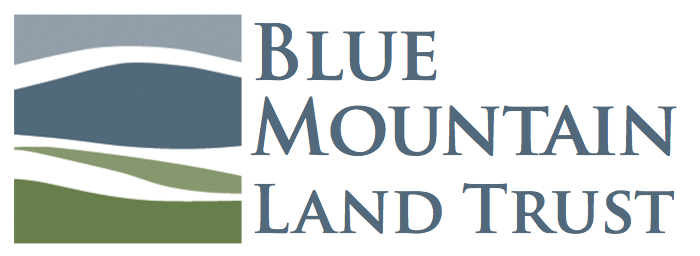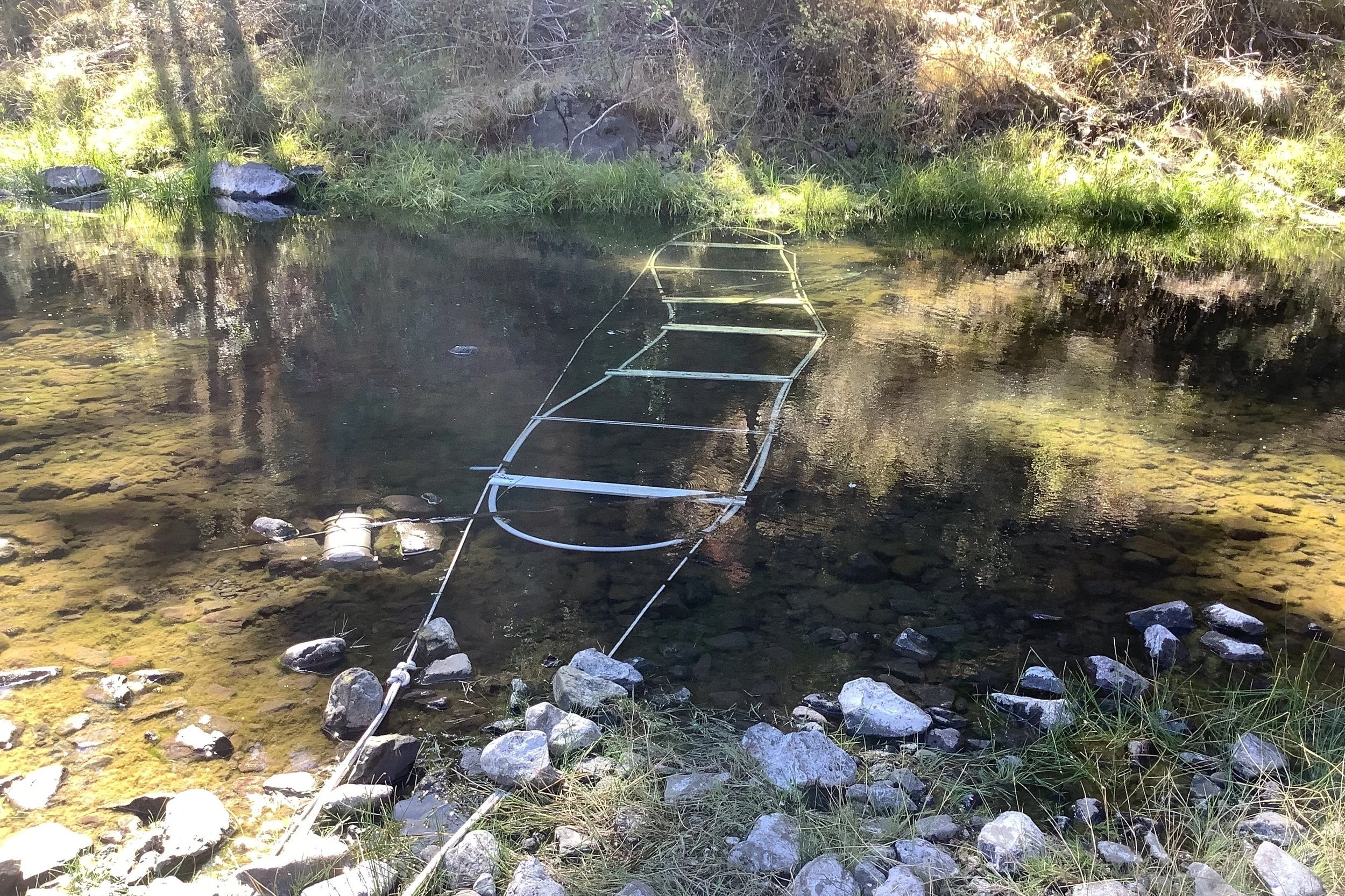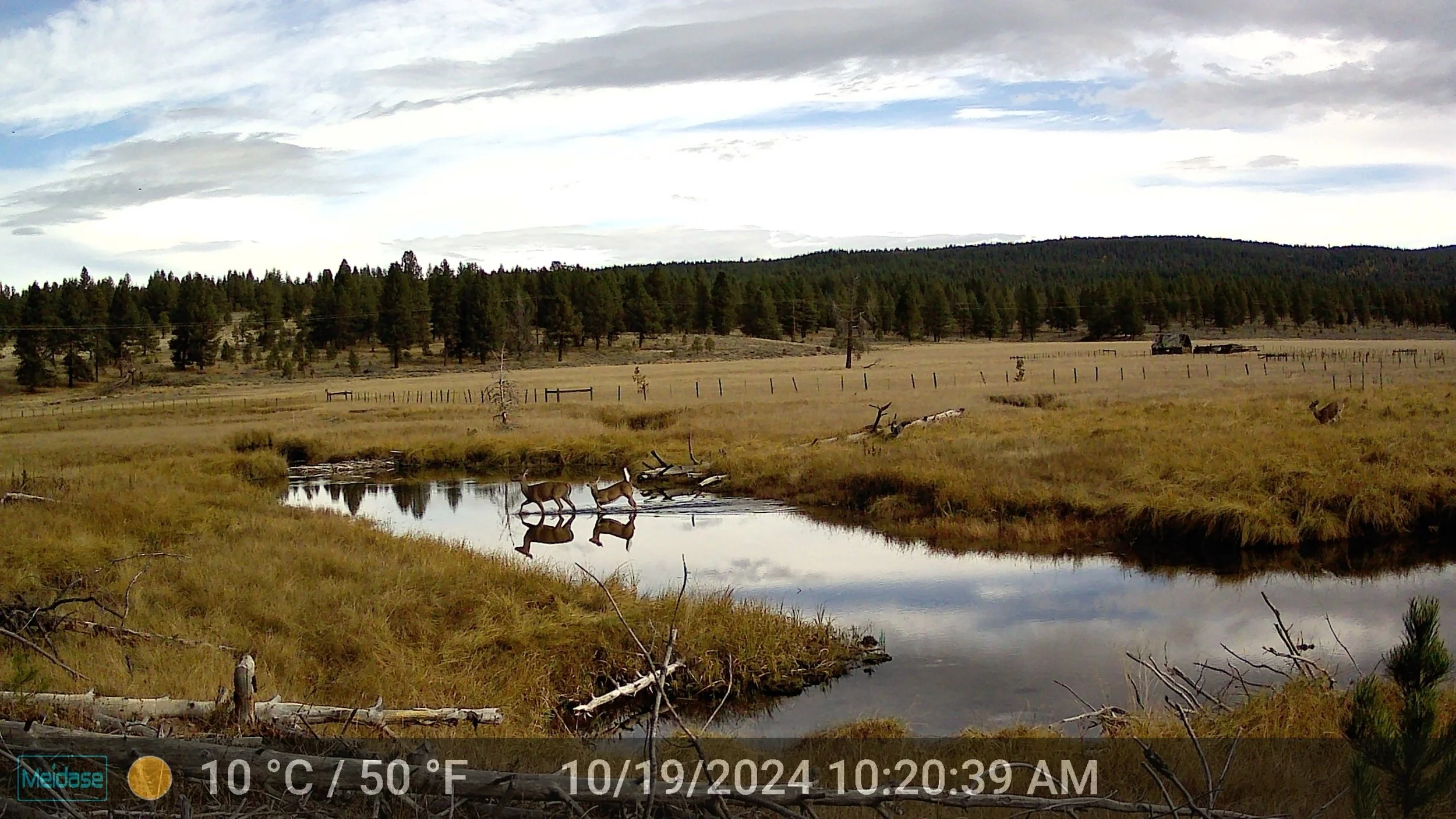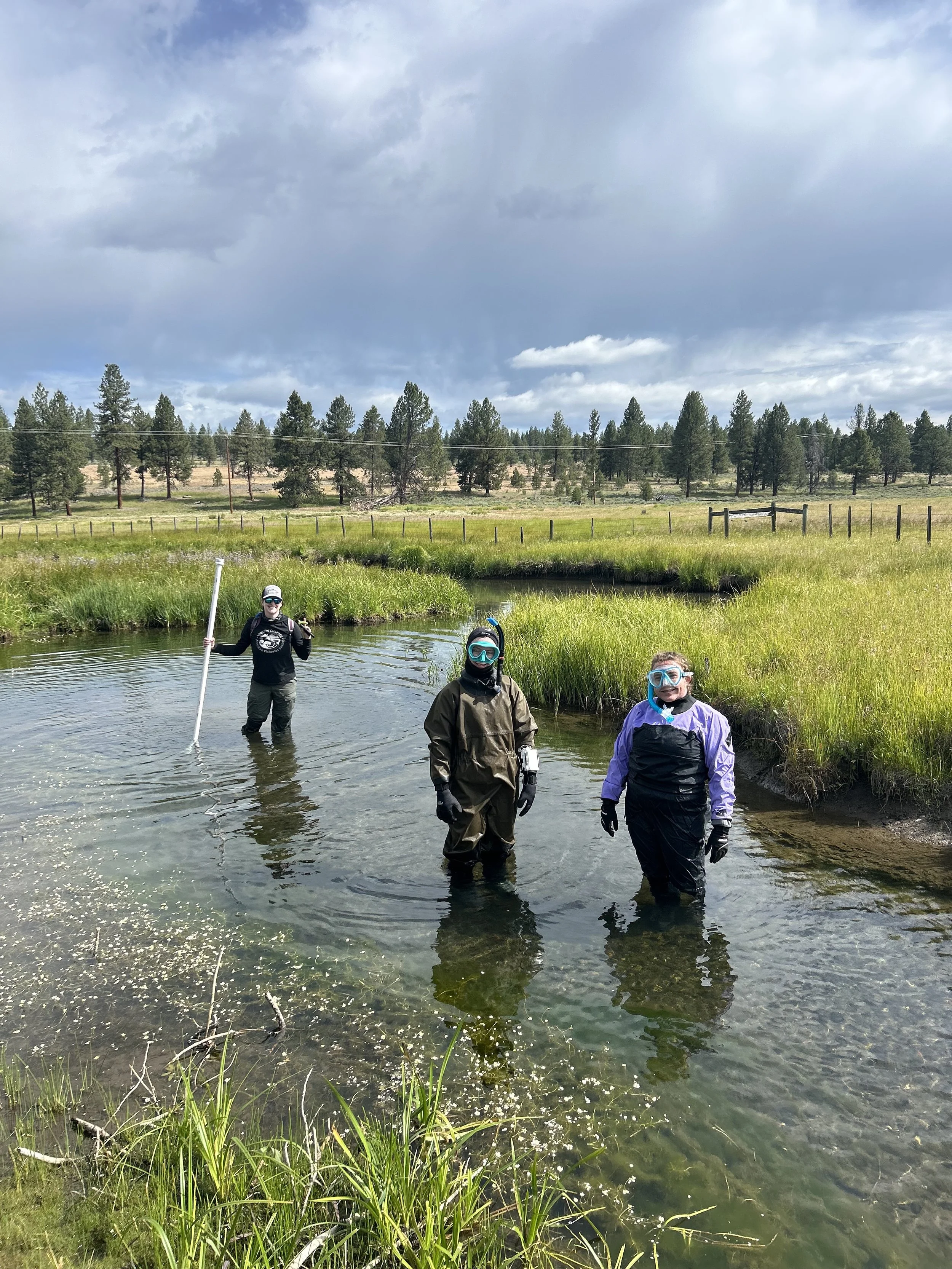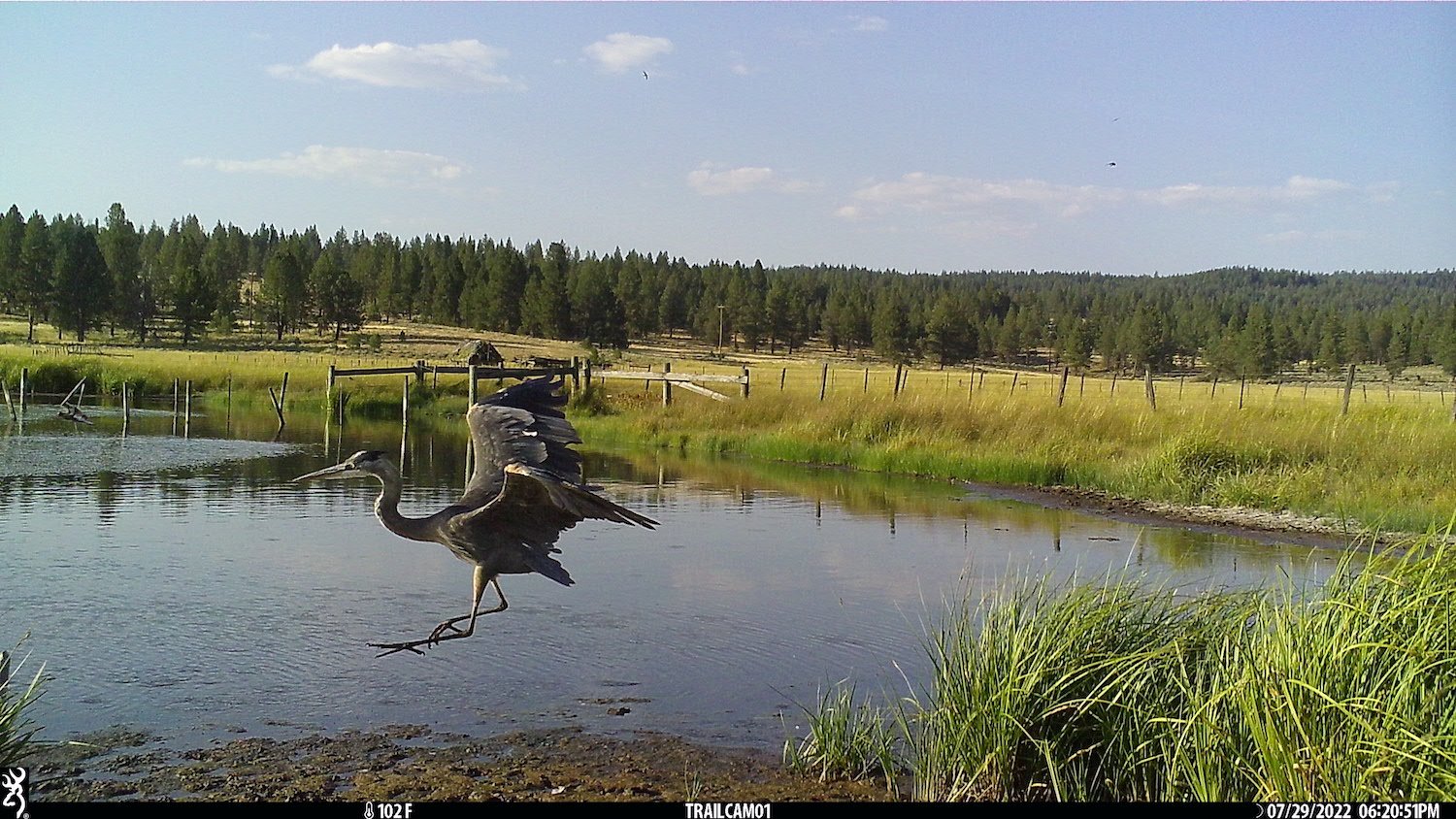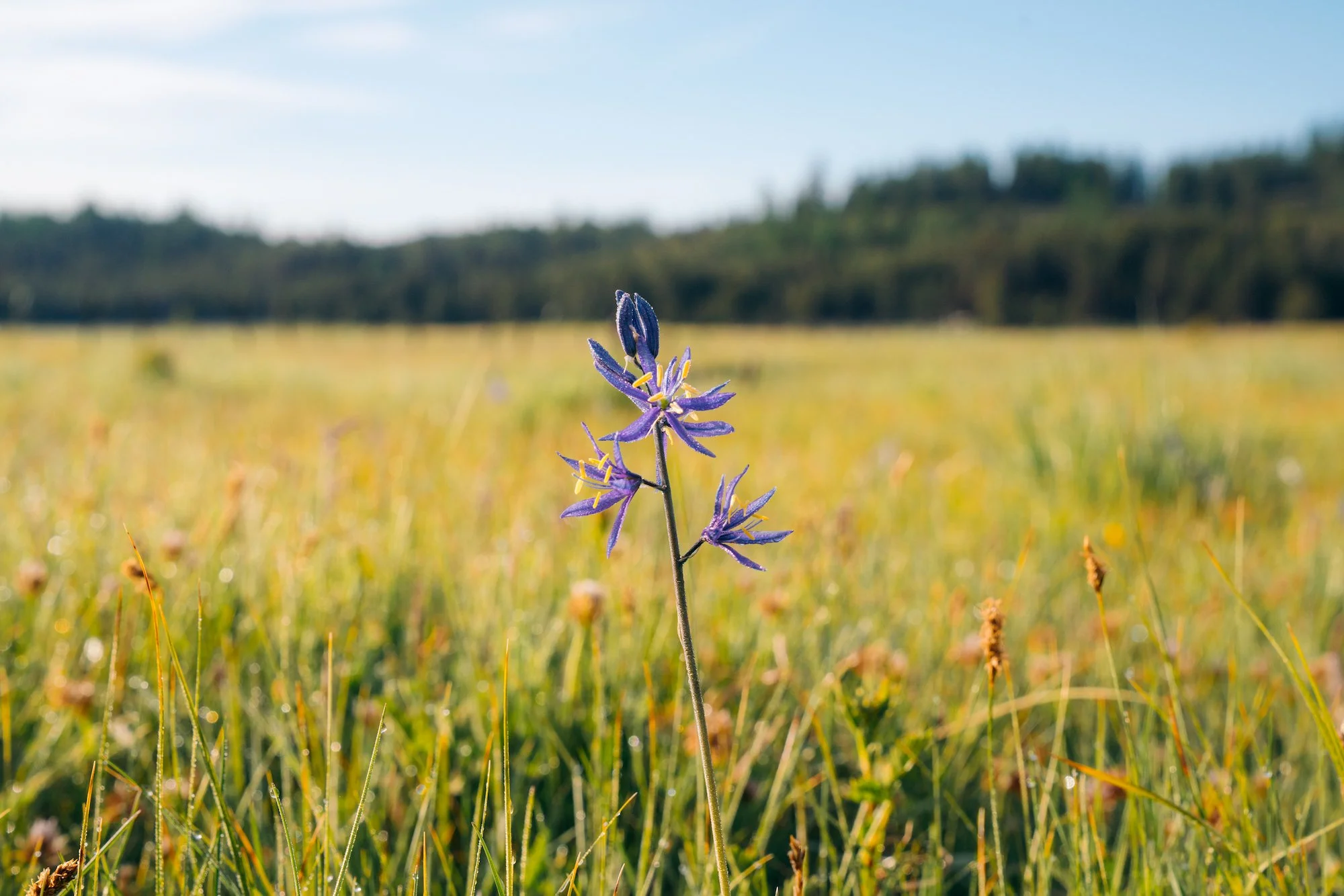Bold action for a brighter future.
The Blue Mountain region is like no other. From rolling farm fields to flowing rivers and sagebrush seas, these landscapes hold what we value most: clean water, open spaces, critical wildlife habitat, good soils, and the well-being of agricultural communities.
BMLT doesn’t just talk about climate resilience, it’s at the core of everything we do. From Dayton, WA, to John Day, OR, every acre matters. Our conservation easements aren’t just paperwork—they’re an ongoing commitment to the communities of the Blue Mountain region to safeguard what matters most.
Protecting a property isn’t where the work ends, it’s when our perpetual responsibility begins. This continuous effort benefits both the environment and the local community—our way of saying, “We protect the land you love. Forever.”
Photograph by William Frohne
Caring for the land. Forever.
Why is stewardship important?
Our commitment to stewardship is built on a promise to protect and care for over 23,327 acres of lands and water — forever. Through knowledge-driven conservation practices and collaborative partnerships, we safeguard diverse habitat, productive farmland, and fish and wildlife corridors across the Blue Mountain region, ensuring their resilience and health for future generations.
At the core of our stewardship approach is a commitment to collaboration with partners and landowners to strengthen nature’s capacity to improve biodiversity, enhance ecosystem resilience, uplift natural resources, and support fish recovery. We are deeply invested in building enduring relationships with the landscapes we protect and the communities who depend on them.
Stewardship is an active process — one that requires monitoring, data collection, and direct engagement. Our dedicated stewardship team visits each protected property every year to assess conditions, support needs, and ensure practices adapt and uphold the health of these lands over time. This consistent relationship allows us to proactively address challenges and sustain the conservation values that make each property unique.
By building connections and embracing our shared responsibility, we ensure that clean water, sustainable agricultural lands, and thriving fish and wildlife habitat remain accessible and protected.
Fish recovery at Meadow Creek
Data-driven conservation
The innovative use of PIT tag ID technology, akin to tiny barcodes for tracking individual fish, is setting the stage for tracking recovery efforts of salmon and steelhead in the Meadow Creek sub-basin.
This area in Eastern Oregon is critical habitat for the spawning and rearing of salmon and steelhead fish in the Grande Ronde and Snake River Watersheds. In 2015 & 2019, BMLT permanently protected the Dark Canyon and McCoy Meadows properties. This protection helps support ongoing efforts to restore and monitor the aquatic environment, led by partner groups including the Confederated Tribes of the Umatilla Indian Reservation (CTUIR), Oregon Department of Fish and Wildlife (ODFW), U.S. Forest Service, and the Columbia River Intertribal Fish Commission.
Near where Meadow Creek joins several important tributary streams and the Grande Ronde River, CTUIR and ODFW set up a special trap and a solar-powered system to track fish, known as a screw trap and PIT tag array. These devices help researchers catch and measure fish as they migrate, as well as tag important species like the Mid-Columbia summer steelhead and spring Chinook salmon with small chips. These chips work like tiny barcodes: whenever a tagged fish swims past detection points at this site or other monitoring locations, it is identified and logged.
The information gathered helps scientists understand how the fish populations are changing over time. The data from the Dark Canyon site will also play a key role in assessing the success of several major river restoration projects that are planned for the Meadow Creek area in the next few years.
Photograph by Matt Franklin
Phipps Meadow
Location: Grant County, OR
Project Size: 278 acres
Rivers: Middle Fork John Day
Stats: Home to 200+ species
Phipps Meadow is undergoing significant restoration planning efforts aimed at reviving its natural function and ecological health. This project is driven through collaboration with important partners, including the Confederated Tribes of Warm Springs, the Oregon Department of Fish and Wildlife, the North Fork John Day Watershed Council, and Malheur National Forest, along with various environmental and engineering firms. As of Fall 2024, the restoration plan is about 30% complete. The final design will be ready in 2025, followed by implementation in 2026.
The project aims to restore vital habitats for native salmon and other fish species in a key area of the Middle Fork John Day River. This river system has faced over a century of challenges due to human activity. The restoration efforts will work to counteract these issues by reshaping the river to reactivate the surrounding floodplain habitats, and improve water quality.
Techniques will include raising certain areas of the river, placing large pieces of wood in the water for habitat, and creating structures that mimic beaver dams. Additionally, native plants like willows, alders, and cottonwoods will be planted and protected to promote growth and provide shade for the river.
Design efforts also include upland management, with about 90 acres of dense pine thinned to enhance forest health, fire resiliency, and habitat diversity. Removed materials will be repurposed for meadow restoration and protective fencing around sensitive habitats. BMLT Blues Crew volunteers and community members will assist in thinning and monitoring to sustain these efforts long-term.
Snorkel Surveys
Fish & data monitoring at Phipps Meadow
Collaboration between conservation organizations is essential for the success of fish recovery efforts in the Blue Mountain region. Monitoring teams from the Confederated Tribes of Warm Springs (CTWS) and Oregon Department of Fish and Wildlife (ODFW) regularly visit Phipps Meadow to collect key data on stream temperature, water quality, water velocity, and other factors. This data helps establish a baseline understanding of stream conditions at the property and its seasonal variation.
This past summer, Columbia River Inter-Tribal Fish Commission (CRITFC), CTWS, and ODFW conducted a snorkel survey on the Middle Fork John Day River. A snorkel survey is a technique used to observe and collect data on fish populations by allowing researchers to swim just below the water’s surface. This method helps assess fish abundance and diversity and is important for monitoring aquatic ecosystem health to guide conservation efforts.
ODFW started a fish monitoring project with help from CTWS and BMLT. They used a non-lethal method to temporarily stun fish, which allowed for the tagging and measuring of important species before letting them go. This approach helps researchers keep track of the growth and movement of key fish types, including Mid-Columbia summer steelhead and spring Chinook salmon. The goal is to see if the restoration efforts are positively impacting fish populations. Additionally, the streams are checked every September for Chinook salmon nests, called redds, to monitor their breeding success.
Photo by Matt Franklin
Nature’s Symphony
Documenting bird species at Phipps Meadow
Forest restoration isn’t just about trees — it’s a game changer for bird and wildlife populations. By enhancing habitat quality through methods like selective thinning and native plantings, we can steward healthier, more diverse ecosystems that cater to the needs of both local and migratory bird species.
With funding from Cornell University, BMLT was able to establish a bird protocol that will be the cornerstone of ongoing monitoring at Phipps Meadow. In June, staff and volunteers from Grant County Birders and Blue Mountain Audubon Society visited the property in the early morning hours to observe birds at monitoring stations positioned throughout varied habitats. Using tools like Merlin, a phone application that helps with bird identification through images and audio recordings of sounds, as well as expert knowledge of more experienced volunteers, a wide diversity of bird species were identified. This data was recorded on eBird, a world-wide portal that tracks community-science observations of bird activity.
These dedicated monitoring days, along with contributions by volunteer birders throughout the year, help fill in our understanding of bird species diversity and seasonal changes. We want to understand how planned restoration actions will lead to a shift in bird abundance over time.
To date, 72 bird species have been observed at Phipps Meadow. 36 species were observed at the bird count in 2024 alone, with five of these species identified for the first time on the property. Notable species that visit Phipps Meadow include: Sandhill Cranes, American Kestral, Black-headed Grosbeak, Wilson’s Snipe, Merlin, Great Horned Owls, Great Blue Heron, and a wide variety of other songbird, shorebird, raptor, waterfowl and woodpecker species.
Photos by Matt Franklin. Artwork by Carlee Allen.
Bird out at Phipps
Follow bird species at Phipps Meadow by using eBird, a free online tool from the Cornell Lab of Ornithology.
Camas found at Phipps Meadow. Photo by Matt Franklin
Camas & Conservation
Native plants at Phipps Meadow
How do you protect vital plant species during restoration? BMLT’s latest project at Phipps Meadow aims to find out.
During peak bloom, the BMLT stewardship team identified plant species at Phipps Meadow to address key management questions: (1) What culturally important or sensitive plant species are present (2) How can we determine their abundance and location to minimize short-term negative impacts during restoration?
The team documented over 50 wildflower species using the Seek app by iNaturalist for rapid identification. This year’s visit yielded a very important and unexpected result: the southeast portion of Phipps Meadow is particularly abundant in camas, a hotspot previously unknown to restoration design teams.
“In previous years, BMLT identified small patches of camas on the west side, which informed our restoration design plans. Now, we have a better understanding of camas distribution on the property,” said Andrew Addessi, BMLT Stewardship Director.
Camas (Camassia quamash) is a perennial plant native to the Pacific Northwest with striking blue to purple flowers. The plant’s grass-like leaves emerge from an underground bulb, which is an important First Food for many Pacific Northwest Tribes, including the Confederated Tribes of the Warm Springs Reservation of Oregon. Camas bulbs are traditionally harvested, cooked, and consumed as a staple carbohydrate, rich in nutrients and cultural significance. However, camas distribution has dwindled due to habitat conversion.
By identifying where these sensitive species thrive, BMLT and partners can plan restoration efforts that minimize short-term impacts and increase the diversity of wetland-dependent native plants as a long-term outcome.
Give back
Interested in volunteering with the stewardship team on projects? Sign up to stay in the loop.
